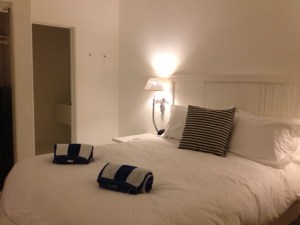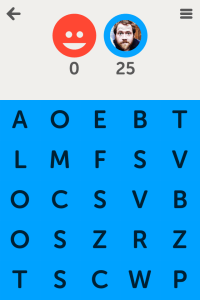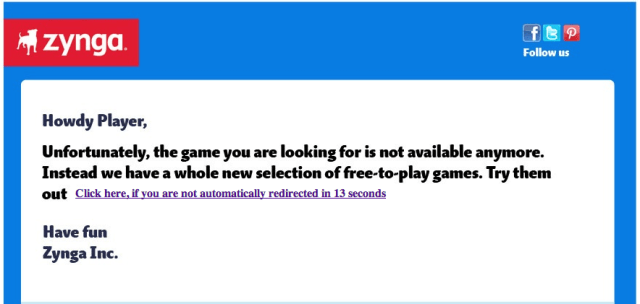I'm just wrapping up a week-long road trip, in which a travel companion and I visited some friends in Southern California. We hit up a few different spots along the way, including San Luis Obispo, Santa Barbara, Los Angeles, San Diego, and Palm Springs. Not a crazy trip, but enough wandering around to go to a few places I'd never been to.
The thing that amazes me about our travel is just how little planning we had to do: We only booked one night's stay ahead of time, and decisions around where to sleep, eat, and visit were mostly spontaneous. If either of us had a better sense of travel planning, it might not have been this way. Maybe we would have seen more sites, or maybe we would have eaten in better restaurants. But we made through just fine, mostly thanks to lots of digital tools. Here's what we used, and what we think could be done better.
Navigation
It didn't take us long to settle on Google Maps for getting around. We might have tried Apple's built-in iOS maps a couple of times, but for going from place to place and getting around in cities. Google's maps and navigation are simply better, as everyone already knows, so I don't have a whole lot more to add on that front. But it's probably worth noting that, after driving more than a thousand miles, it was definitely our app of choice.
Lodging
I'm a big fan of Airbnb, and have used it for nearly all non-work travel I've done over the past several years, and even some travel I've done for work. So for our first stop on the trip, somewhere between San Francisco and Los Angeles, we wanted to find a place to stay somewhere around San Luis Obispo or Santa Barbara. For pure novelty's sake, we settled on a yurt outside of SLO. (It was probably what you'd expect from an outdoor enclosure built on an "art farm" in Arroyo Grande — horses and dogs and outdoor bathroom and all — but it was cozy enough, and makes for a good story.)

The Alcazar hotel in Palm Springs, which we booked on Hotel Tonight. It was very white.
But for the rest of the trip, we used
Hotel Tonight, which is quickly becoming one of my favorite travel apps. That includes two nights in San Diego and one in Palm Springs — we stayed with family in L.A. — all of which cost about $120 or less. (We also benefitted from $25 new sign up and referral credits, but I'm not counting that.) Because we were doing everything pretty spontaneously, and we didn't necessarily know where or how long we would be staying in whatever various city we landed in, Hotel Tonight was a pretty ideal choice for finding reasonably priced lodging.
While Airbnb works well for finding places for generally longer stays well ahead of time, especially if you want to stay in hip or far-off neighborhoods, our preliminary searches kept us from booking anything for this trip. For one thing, all of the full-home Airbnb places we looked at — as well as some of the shared spaces — were priced around the same as Hotel Tonight lodgings in comparable areas. And we would have to deal with the friction of getting Airbnb hosts to agree to house us, handing off keys, and the like. This trip was all about instant gratification, and there's little more gratifying than booking a hotel by sliding your finger along that little Hotel Tonight bed icon.
Food and drink

I found beer, thanks to Yelp, TripAdvisor, and asking a local
The
Yelp mobile app still wins for food discovery, although I admit to checking out
Foursquare Discover once or twice, just to see what it would recommend. Both were good for suggesting places we'd never heard of in cities we've never visited. That said, I'm finding Yelp's rating system less useful in actually determining good places to eat, rather than just keeping you from places that are not so good. After all, where do you go when everything is 3.5 or 4 stars?
For that, we settled on a very non-technical solution, called "Ask a local." Getting offline reviews from people who lived in a city tended to trump whatever we could find out by browsing the Internet or Yelp mobile app. These are the people who know the city best, after all.
Finding things to do
I hate to say this, but TripAdvisor was our go-to mobile solution for finding things to do on the fly. And I hate saying that, because I really, really hate TripAdvisor. It has a good list of things to do, and user ratings tend to get the cream to rise to the top, but outside of pointing me to other websites to look at, it's really not that useful.
I really wanted to like using Peek, especially since San Diego is one of its featured destinations. But, Perfect Days notwithstanding, I found the focus on transactional commerce off-putting. Plus, we weren't looking for "amazing things to do." Just like, chill, hanging out things to do. If we had thought about it earlier, we probably could have used the RoadTrippers mobile app for off-the-beaten track ideas.
As it is, "Ask a local" was again probably the best suggestion. Someone please disrupt this space.
Avoiding crappy local radio
A $10 auxiliary cable to plug into our rental car's stereo was the best purchase we made on the whole trip. Listening to Spotify and Pandora instead of the same ten songs on the same five radio stations wherever you drive throughout the country is a godsend. And if you really need to listen to NPR, TuneIn Radio is a much better solution for listening to the local public radio station, rather than trying to find it and then having Car Talk crap out due to static 20 minutes later.

This poor dude who played me at Letterpress
Fighting mind-numbing boredom during long drives
One word: Letterpress
Bonus apps
Disneyland. Our trip included a stop in Disneyland on Christmas, where we used a couple of apps for getting around. I found the official Disneyland app to be just sufficient for maps and wait times, restaurant choices and menus, etc. But it could be better! Faster load times, for instance. My travel companion used one of the crappy, non-park sanctioned "Wait Time" apps. It wasn't pretty and frankly, I'm skeptical of what seemed like just a rip-off of information that is freely available elsewhere, so I'm not linking to it.
There's also the issue of poor connection, due to tens of thousands of people being in a confined space, all with their mobile phones on. Disney, please install free Wi-Fi parkwide, STAT, and offload some of that mobile data traffic!
Starbucks. I have the bladder of a five-year old, and have to pee every five minutes. So there's no app that is more essential than the one which shows you where the nearest Starbucks, which is also likely the nearest free and clean open local restroom, while on a long road-trip.
 When mobile industry body MEF made its predictions for 2012 it suggested that there would be some spectacular trials using NFC, but that mobile payments would fail to have a significant commercial impact.
When mobile industry body MEF made its predictions for 2012 it suggested that there would be some spectacular trials using NFC, but that mobile payments would fail to have a significant commercial impact.




































